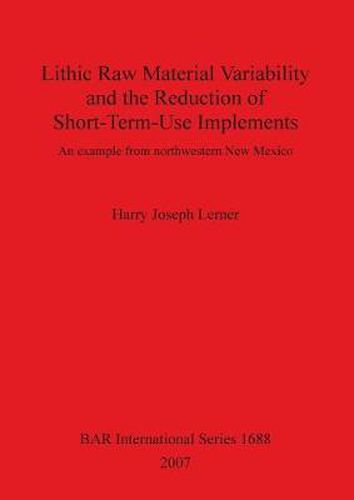Readings Newsletter
Become a Readings Member to make your shopping experience even easier.
Sign in or sign up for free!
You’re not far away from qualifying for FREE standard shipping within Australia
You’ve qualified for FREE standard shipping within Australia
The cart is loading…






This title is printed to order. This book may have been self-published. If so, we cannot guarantee the quality of the content. In the main most books will have gone through the editing process however some may not. We therefore suggest that you be aware of this before ordering this book. If in doubt check either the author or publisher’s details as we are unable to accept any returns unless they are faulty. Please contact us if you have any questions.
Chipped stone tools are a truly dynamic medium of material culture. From initial reduction to contemporary excavation, lithic artifacts undergo continuous change. The role of the properties of raw materials in determining rates of use-wear accrualis poorly understood and has rarely been assessed quantitatively. This study offers such quantification regarding four materials exploited for the production of short-term use implements at the Late Archaic FA2-13 site located just outside the cityof Farmington, New Mexico. Both experimental and archaeological use-wear evidence was assessed in separate but related ways. Digital image analysis of use-wear invasiveness using ClemexVision PE and GIS analysis of use-wear homogeneity using IdrisiKilimanjaro yielded distinct but highly complementary results. Direct testing of material properties of non-archaeological samples using a Hysitron Triboindenter served to further clarify these findings in terms of the complex relationship between raw material surfacehardness and roughness. The results of the present study show that there are significant differences between rates of wear accrual among the four materials. Analysis of tools from FA2-13 indicates that while scraping activities likely did predominate, it may also be feasible to generate more detailed assessments regarding the kinds of scraping activities that were undertaken and the respective intensities with which they were performed. This increased insight can then be extrapolated for application to long-term use technologies and their more complex life histories.
$9.00 standard shipping within Australia
FREE standard shipping within Australia for orders over $100.00
Express & International shipping calculated at checkout
This title is printed to order. This book may have been self-published. If so, we cannot guarantee the quality of the content. In the main most books will have gone through the editing process however some may not. We therefore suggest that you be aware of this before ordering this book. If in doubt check either the author or publisher’s details as we are unable to accept any returns unless they are faulty. Please contact us if you have any questions.
Chipped stone tools are a truly dynamic medium of material culture. From initial reduction to contemporary excavation, lithic artifacts undergo continuous change. The role of the properties of raw materials in determining rates of use-wear accrualis poorly understood and has rarely been assessed quantitatively. This study offers such quantification regarding four materials exploited for the production of short-term use implements at the Late Archaic FA2-13 site located just outside the cityof Farmington, New Mexico. Both experimental and archaeological use-wear evidence was assessed in separate but related ways. Digital image analysis of use-wear invasiveness using ClemexVision PE and GIS analysis of use-wear homogeneity using IdrisiKilimanjaro yielded distinct but highly complementary results. Direct testing of material properties of non-archaeological samples using a Hysitron Triboindenter served to further clarify these findings in terms of the complex relationship between raw material surfacehardness and roughness. The results of the present study show that there are significant differences between rates of wear accrual among the four materials. Analysis of tools from FA2-13 indicates that while scraping activities likely did predominate, it may also be feasible to generate more detailed assessments regarding the kinds of scraping activities that were undertaken and the respective intensities with which they were performed. This increased insight can then be extrapolated for application to long-term use technologies and their more complex life histories.